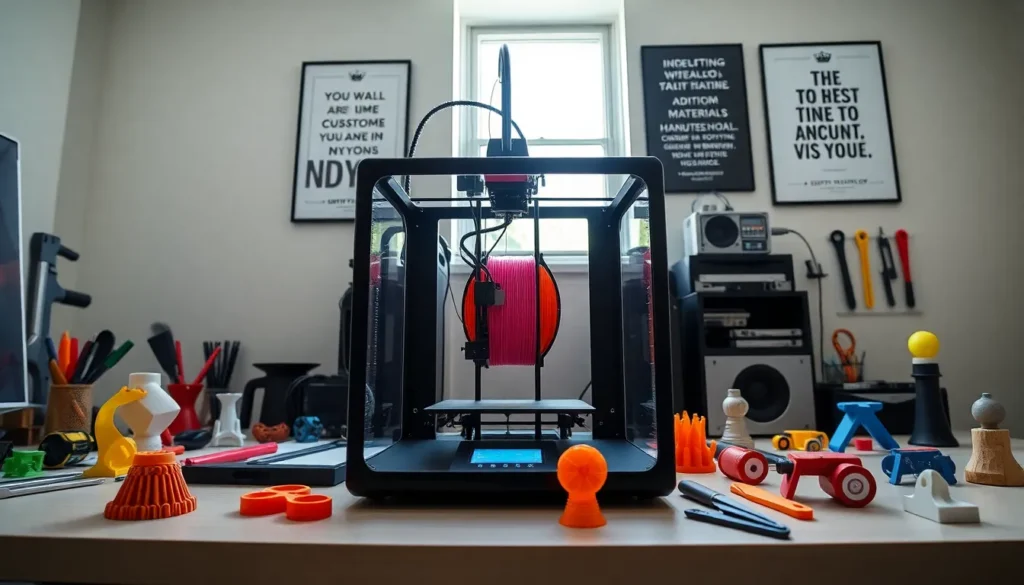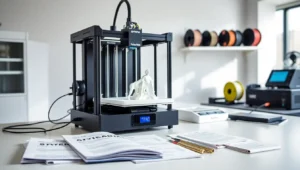Have you ever thought about creating a durable, lightweight product from the comfort of your own home? Welcome to the world of 3D printing nylon. This remarkable material offers incredible versatility, making it a popular choice among hobbyists and professionals alike. Imagine printing anything from functional prototypes to custom tools, all while enjoying the satisfaction of crafting your own creations. Whether you’re a seasoned maker or just looking to jump into the fascinating realm of additive manufacturing, this guide will take you through the essential aspects of 3D printing with nylon. Get ready to unleash your creativity and perhaps giggle a little at the unexpected joys, and challenges, of this adventure.
Table of Contents
ToggleUnderstanding Nylon in 3D Printing

Nylon is a synthetic polymer that’s often hailed for its high strength and flexibility. In the realm of 3D printing, nylon stands out as one of the most popular filaments available due to its excellent performance characteristics. But what exactly does that mean for makers and manufacturers?
Types of Nylon for 3D Printing
There are several types of nylon filaments to choose from, each bringing something unique to the table. Nylon 6, for instance, is favored for its chemical resistance and toughness, making it a great candidate for industrial applications. Nylon 12 offers a broader range of thermal and mechanical properties, while Polyamide (PA) 11 is derived from renewable resources, appealing to those eager to minimize their environmental footprint. Each type brings specific advantages, so understanding these variations is crucial for any project.
Advantages of Using Nylon in 3D Printing
The list of advantages when using nylon for 3D printing is quite impressive. First and foremost is its strength-to-weight ratio. Nylon parts tend to be lightweight yet incredibly durable, which is vital for applications that require both resilience and portability.
Another key benefit is flexibility. Unlike some rigid materials, nylon can bend without breaking, making it ideal for applications like hinges or snap-fit components. Also, nylon has a great deal of resistance to abrasion and chemicals, which opens up possibilities for use in industries ranging from automotive to medical.
Not to mention, nylon adheres well to itself during the printing process, creating strong layer adhesion that results in cohesive structures. These properties make nylon a formidable player in the 3D printing world.
Challenges and Considerations
While the advantages of nylon are compelling, there are challenges to be aware of before diving in.
Preparation and Setup for 3D Printing with Nylon
One primary concern is moisture absorption. Nylon is hygroscopic, meaning it readily absorbs moisture from the air, which can lead to poor print quality. To combat this, proper storage and pre-drying of the filament are essential. Makers often require a dedicated filament dryer or vacuum-sealed containers to keep their nylon in optimal condition.
Another consideration is bed adhesion. Due to its low surface energy, nylon can be tricky to get to stick to the print bed. Using a suitable adhesive or a heated bed can help, but experimenting with various approaches is often necessary to achieve the best results.
Post-Processing Techniques
After printing, the surface finish of nylon can feel a bit rough. Techniques such as sanding, chemical smoothing, or even dyeing can enhance the appearance of finalized prints. Certainly, patience plays a crucial role in achieving the desired finish.
Applications of Nylon 3D Printing
Nylon finds its way into various industries, including automotive, aerospace, and even fashion. Its adaptability makes it a favorite for prototyping when testing parts for their functionality and fit. Think of all the custom gears, brackets, and tools that can be easily tailored for specific needs.
Choosing the Right Nylon Material
Choosing the right nylon for your specific application often depends on the requirements for strength, flexibility, and environmental resistance. For instance, if a part will be exposed to high temperatures, selecting a heat-resistant nylon variant can make all the difference.
Hobbyists often appreciate nylon’s aesthetic appeal too, after all, who wouldn’t want to showcase a beautifully printed, custom-designed tool?





